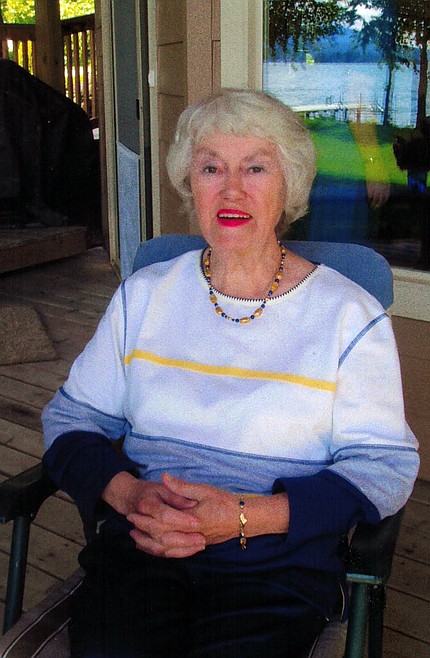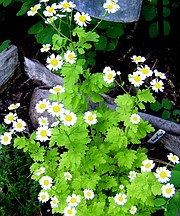Welcoming winter birds, and digging heirloom veggie, flower gardening
On Oct. 1, I tossed seeds to my remaining migratory bird population — a few Towhees, several Cassin’s and Rosy finches — and the next morning they were gone. My wintertime flocks of chickadees, nuthatches, Juncos and a few chipping sparrows remain now to hold down the fort — i.e., front-deck bird-feeding station — and a cheerful, delightful gathering they are!
The Juncos are not feeder-friendly, so I broadcast black-oil sunflower seeds for them, and the sparrows, who can’t eat the tough-shelled seeds — get their ration of mixed millet, shelled sunflowers, cracked corn, etc., scattered on the open deck.
Thankfully, “my” gorgeous brilliant blue black-headed Steller’s jays remain, and share peanuts in the shell with the chickadees and Pine-jimmies (Western Red tree squirrels). Too, the wonderful assortment of woodpeckers that continue to visit the numerous suet blocks delight me. The great big long-time resident Piliated woodpecker, a couple of Hairys and their look-alike but much smaller cousins — the Downys, vie with my rarely seen Ladderback, a pair or two of Red-shafted Flickers, and a Red-breasted sapsucker. An occasional blue and white Scrub jay (formerly California Jay) drops by to bully the little guys and sometimes kill a fledgling. He is not welcome — and totally different from his easy-going Steller’s cousin.
By the way, chickadees and nuthatches enjoy the suet blocks as much as the woodpecker clan — and it’s common to see a small songbird clinging to one side of a block while a woodpecker works on the other side. There seems to be no antipathy whatsoever, and often, one will move a bit to accommodate a much larger — or smaller — diner. It’s hysterical, too, when the huge Piliated lands on a block: It goes into amazing contortions to position itself in such a way as to hang on and get a beak-full. I often see one hanging upside down, clinging to the holder and pecking away. Laughter is truly the best medicine –it’s the only medicine I take and in large doses.
Other winged visitors come and go and I’m so happy to be able to provide a safe (and culinary) stopover for them. I’ve had a lone Mourning dove all summer long, and it’s sad refrain is so beautifully heart-breaking. My Robin pair has left but the colorful Varied thrush continues to visit. I often hear it’s drawn-out one-note call (in two different tones) from the woods.
The birds and the Old Farmer’s Almanac tell us that winter’s on the way — and with that in mind, I’m going to share an idea with those of you who are veggie/flower gardeners: Heirloom seeds. Leafing through the Monticello holiday catalog, I saw an offer I couldn’t refuse — historic seeds! Some admittedly won’t work here in north Idaho, but many beckon with great possibilities for new challenges and (hopeful) culinary rewards!
I visited Thomas Jefferson’s beautiful dome-shaped home twice during visits to daughter Olivia when she worked in the D.C. area. Coincidentally, I saw my first and only cardinals there! It was many years ago, but I loved the house itself and the surrounding gardens, and to find the opportunity to grow some of the great old edibles and ornamentals from the 17- and 1800s is too good to pass up. The seeds I sent for — and received, include Yellow pear and Cherokee Purple tomatoes, Scarlet runner beans, White eggplant(!), Bullnose pepper, “Rouge demi-long de Chantenay” carrot — among others, and flower seeds including Pot marigold, Corn poppy, Love-in-a-Mist, Foxglove, Purple coneflower, Arikara sunflower — and many more.
I’ll plant the vegetables in large containers and/or small beds, and plan to loose-sow some of the flower seeds in special sites and others in specially-prepared spots. (I gotta’ share with you, I just burst into laughter at the idea of planning all this at 90! Well, hey, if I’m still here, might as well have a plan, right?!)
If you’re interested in the heirloom idea, there are several options. Here are a few.
Find over 300 varieties of historic and native seeds/plants at monticelloshop.org or 1-800-243-1743; Old Sturbridge Village, Museum Gift Shop, 1 Old Sturbridge Village Road, Sturbridge, Maine, 10566; Seeds Blum, HC33 Box 2057, Boise, ID, 83706, Catalog available; Territorial Seed Co., P.O. Box 157, Cottage Grove, OR, 07424-0061; Vermont Bean Seed Co., Garden Lane, Fair Haven, VT, 05743.
There are many, many more, and it just occurred to me that all my readers doubtless have super-computers/smart phones to find and contact sources galore. I’m not on-line, so have to do things the old-fashioned way — (which doesn’t bother me at all). Anyhow, have fun finding a site you like and see if one tempts you — as it did me!
On the subject of communication, I must interject a point. I’ve noticed more and more ads and announcements in the paper that include only an e-mail contact and no phone number. How rude and arrogant is that?! I know for a fact I am not the only person in the Sandpoint area without internet access — often due to location. I’ve mentioned this to other friends with only phone contact and they agree that it is at the very least inconvenient not to be included in the information chain, but insulting as well. I pay my bills by check and the U.S. mail, and have a “paper trail” for proof of all my dealings. My fellow members at the Arboretum, the Bonner County Gardeners Association, and Scotchman Peaks see to it that I am mailed paper copies of all their (our) activities; it seems it would behoove area businesses to hang on to their phone lines for those that want to deal with them.
OK, tirade over. Good buddy Steve Barton just dropped off a beautiful load of cedar rounds for my newly-cleaned wood heater. The woodshed’s full and — like the birds — I’m ready for winter! Life is really pretty darn good! Keep warm!
Valle Novak writes the Country Chef and Weekend Gardener columns for the Daily Bee. She can be reached at bcdailybee@bonnercountydailybee.com. or by phone at 208-265-4688 between the hours of 8 a.m. to 7 p.m.





